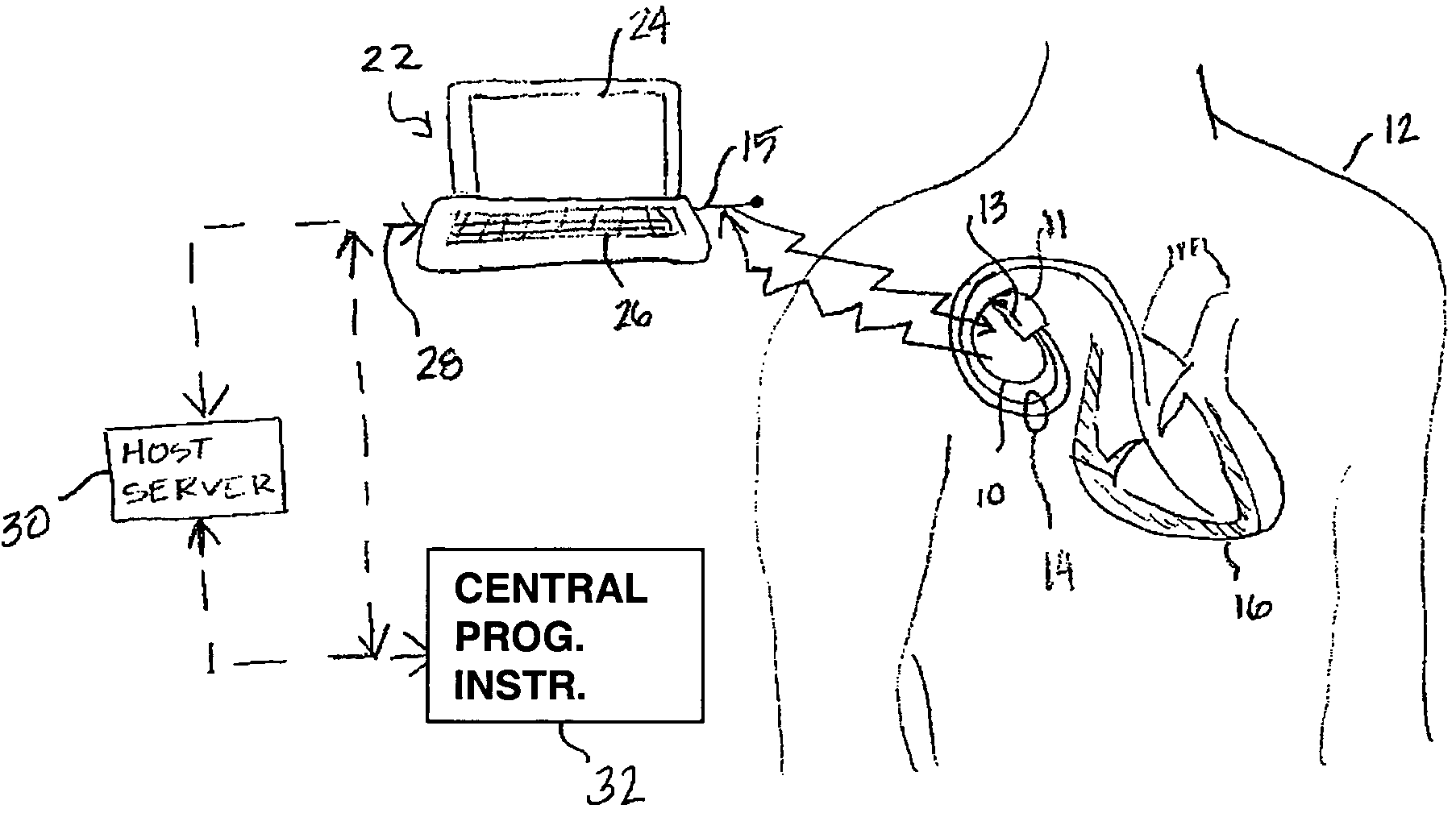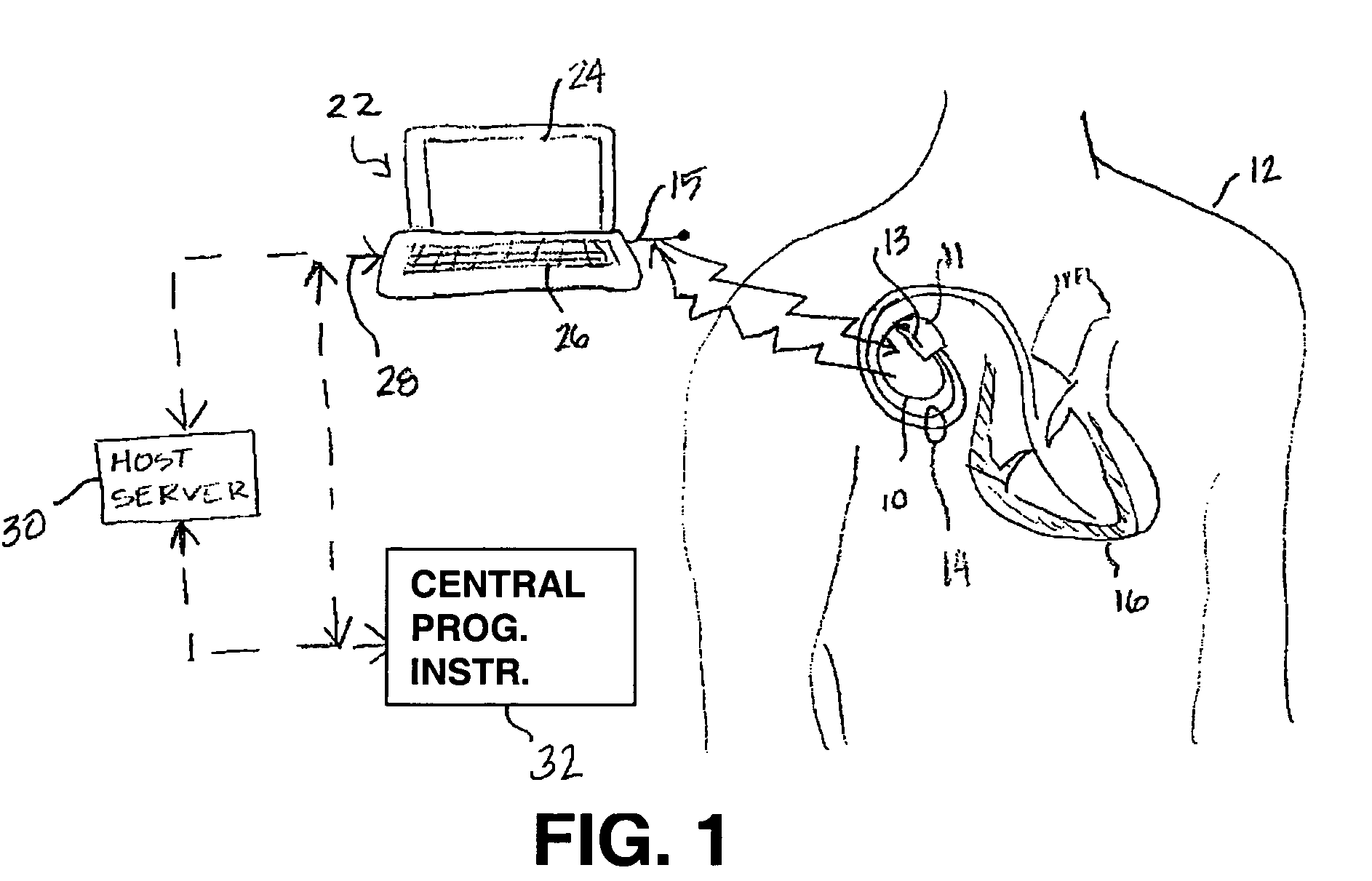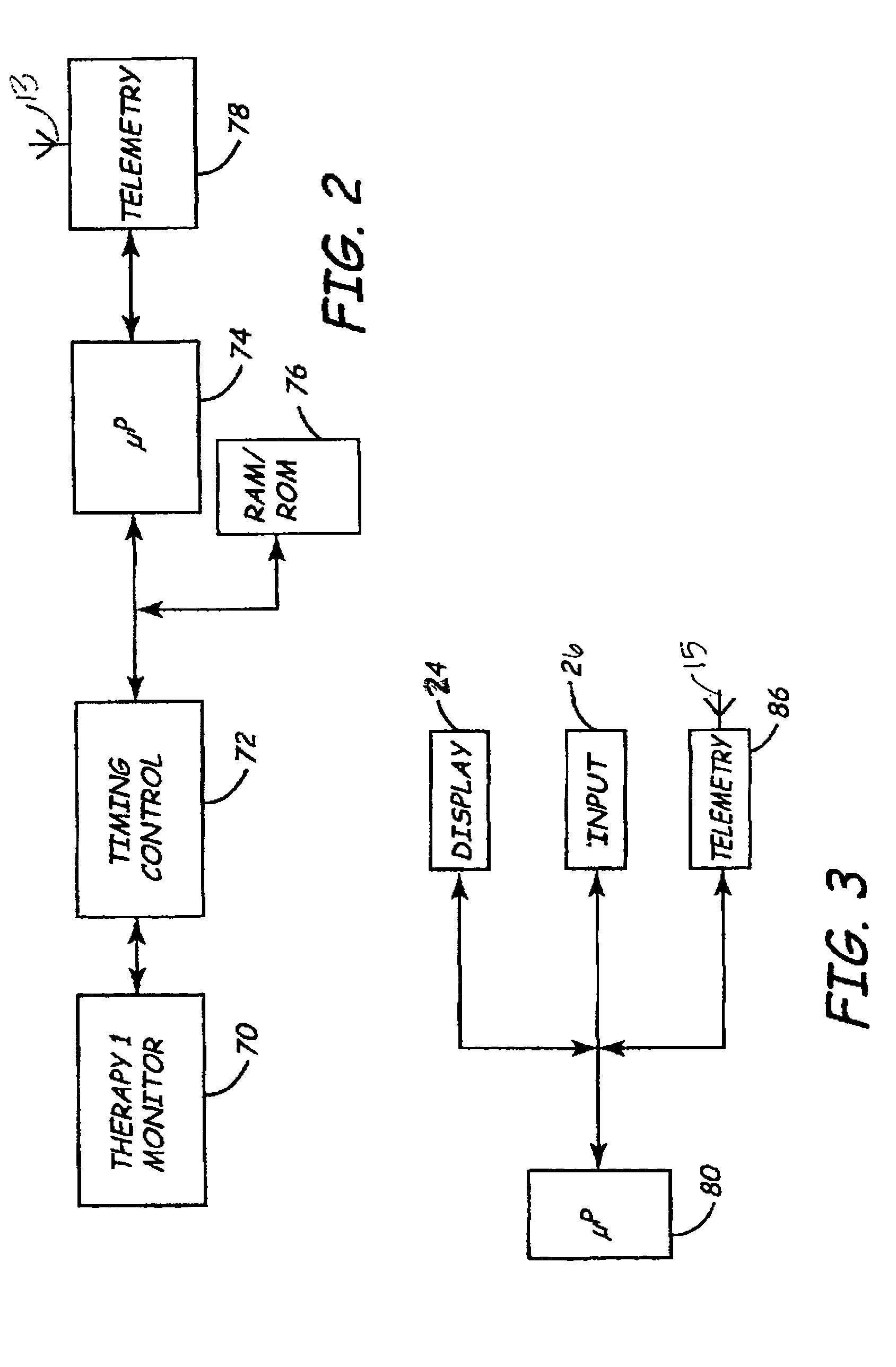Conditional requirements for remote medical device programming
a medical device and programming technology, applied in the field of remote programming of implantable medical devices, can solve the problems of patient indefinite hospital stay, economic and social problems, and limited clinical services in the past, and achieve the effects of improving patient comfort, reducing the risk of infection, and improving the quality of li
- Summary
- Abstract
- Description
- Claims
- Application Information
AI Technical Summary
Benefits of technology
Problems solved by technology
Method used
Image
Examples
Embodiment Construction
[0024]As indicated above, the present invention includes a remote programming method for use with medical device systems that helps provide safe, secure programming of a medical device in a remote location. “Remote” programming, as used herein, refers to programming operations being performed when the patient having an IMD being programmed is not in the direct physical presence of a clinician or user performing the programming. FIG. 1 is an illustration of a medical device system in which the present invention may be practiced. The medical device system includes an IMD 10 and an EMD 22. IMD 10 is shown implanted in the body of a patient 12. The present invention may be implemented for use with a variety of programmable IMDs, including cardiac stimulation devices, cardiac or other physiological monitoring devices, neuromuscular stimulators, implantable drug pumps, or the like. For the sake of illustration, IMD 10 is shown here as a cardiac stimulation device coupled to a set of leads...
PUM
 Login to View More
Login to View More Abstract
Description
Claims
Application Information
 Login to View More
Login to View More - R&D
- Intellectual Property
- Life Sciences
- Materials
- Tech Scout
- Unparalleled Data Quality
- Higher Quality Content
- 60% Fewer Hallucinations
Browse by: Latest US Patents, China's latest patents, Technical Efficacy Thesaurus, Application Domain, Technology Topic, Popular Technical Reports.
© 2025 PatSnap. All rights reserved.Legal|Privacy policy|Modern Slavery Act Transparency Statement|Sitemap|About US| Contact US: help@patsnap.com



